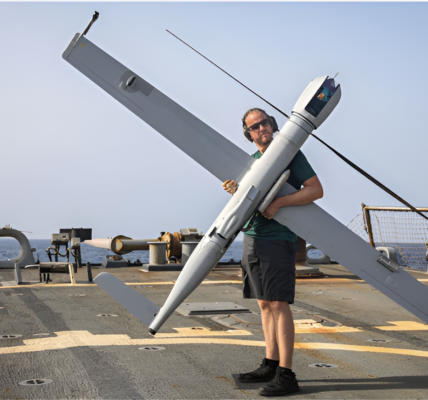
The S-300 has solidified its place as one of the most iconic and widely deployed air defence systems in the world. With a significant operational history spanning from the Soviet era to the modern-day Russian Armed Forces, the S-300 family has shaped the landscape of air defence not only in Russia but also in many foreign nations, including China, Iran, Vietnam, and Algeria. Its combat deployment has seen use in various theatres, including the ongoing war in Ukraine and the 2020 Nagorno-Karabakh conflict, demonstrating its importance and versatility. However, it was the 1990s when the S-300 system underwent a dramatic transformation that elevated it to new heights of capability, fundamentally reshaping the air defence framework of Russia and its international clients.
The Early Years of the S-300: A Medium-Range Workhorse
Initially deployed in the late 1970s, the S-300 system replaced the aging S-75, providing the Soviet Union with a highly mobile air defence solution designed to target both aircraft and missiles. At the time, long-range air defence duties were left to the S-200 system, which boasted an impressive 300km engagement range. The S-300, with its medium-range capability of 70km, was intended as a complementary system rather than a replacement. The S-300P and its successor, the S-300PM/PS, which entered service in 1985, extended this range to 90km, improving accuracy and targeting precision. Despite these advancements, the system was still limited when compared to its long-range counterpart, the S-200.
Enter the S-300PMU: A Leap in Capability
In 1992, the S-300PMU-1 ushered in a new era for the system, fundamentally transforming its role and capability. The introduction of the 48N6 missile, which could engage targets at an impressive 195km range, represented a monumental leap. The 48N6 missile’s Mach 5.8 speed allowed it to target faster, higher altitude threats, offering a significant advantage over the S-200’s slower, longer-range missiles.
One of the defining features of the S-300PMU series was its mobility. The system could now be deployed on mobile launchers, a stark contrast to the S-200, which was largely fixed and immobile. This mobility was coupled with the ability to deploy multiple missile types simultaneously, providing a multi-layered defence within a single system. For the first time, Russian air defences were capable of handling a broader range of threats, from high-speed aircraft to ballistic missiles, all with an unprecedented level of mobility and flexibility.
The system’s sensors were also significantly improved, enabling engagements at longer ranges and under more challenging conditions. These upgrades greatly enhanced the survivability of Russia’s air defence network, providing an efficient, flexible, and highly effective shield against incoming threats. The S-300PMU-1 was also a success on the international stage, with major exports to countries like China, which further solidified its status as a cornerstone of modern air defence.
The S-300PMU-2 and S-300PMU-3: Expanding Capabilities
The S-300PMU-2, introduced in 1997, further refined the system’s capabilities. Notably, it added the ability to intercept intermediate-range ballistic missiles, along with enhancements to the command post, radar systems, and electronic warfare components. The PMU-2 also brought increased autonomy for individual firing units and improved the system’s capacity to engage more targets simultaneously.
By 2007, the S-300PMU-3 (renamed the S-400) entered service, marking the next major step in the evolution of Russia’s air defence strategy. The S-400 incorporated cutting-edge technologies, including a 250km engagement range, later extended to 400km, and the ability to intercept hypersonic missiles traveling at speeds exceeding Mach 8. Perhaps its most remarkable feature was its use of multiple radars working in different wavebands to provide a highly effective detection range of up to 600km, making it capable of tracking large aircraft as well as stealthy fifth-generation fighters at significant distances.
The Post-Soviet Air Defence Landscape
In the post-Soviet era, Russia’s air force was significantly reduced, and many of its fifth-generation fighter programs were delayed or cancelled. However, the S-300PMU series, alongside the S-400, played an instrumental role in maintaining Russia’s air defence superiority. With their combination of long-range strike capabilities and mobility, these systems allowed Russia to safeguard its airspace with a cost-effective solution.
By the late 2010s, the S-300PMU-1, PMU-2, and S-400 had become the cornerstone of Russia’s national air defence network. The S-400, in particular, became a global export success, with countries like Turkey, India, and Belarus adopting the system, and helping Russia reinforce its strategic influence worldwide.
A Legacy of Innovation and Strength
The S-300PMU series revolutionized air defence, expanding the capabilities of its predecessors and introducing new technological advancements that continue to shape Russia’s defence strategy. With its combination of mobility, long-range capabilities, and the ability to simultaneously engage multiple threats, the S-300PMU has ensured that Russia remains at the forefront of global air defence systems.
The legacy of the S-300PMU series is one of remarkable transformation and innovation, taking a medium-range air defence system and evolving it into a multi-role, long-range powerhouse capable of neutralizing a wide array of airborne threats. As Russia’s air defence network continues to expand and evolve with the S-400 and future systems like the S-500, the S-300PMU will undoubtedly remain a vital component of its strategic defence infrastructure for decades to come




